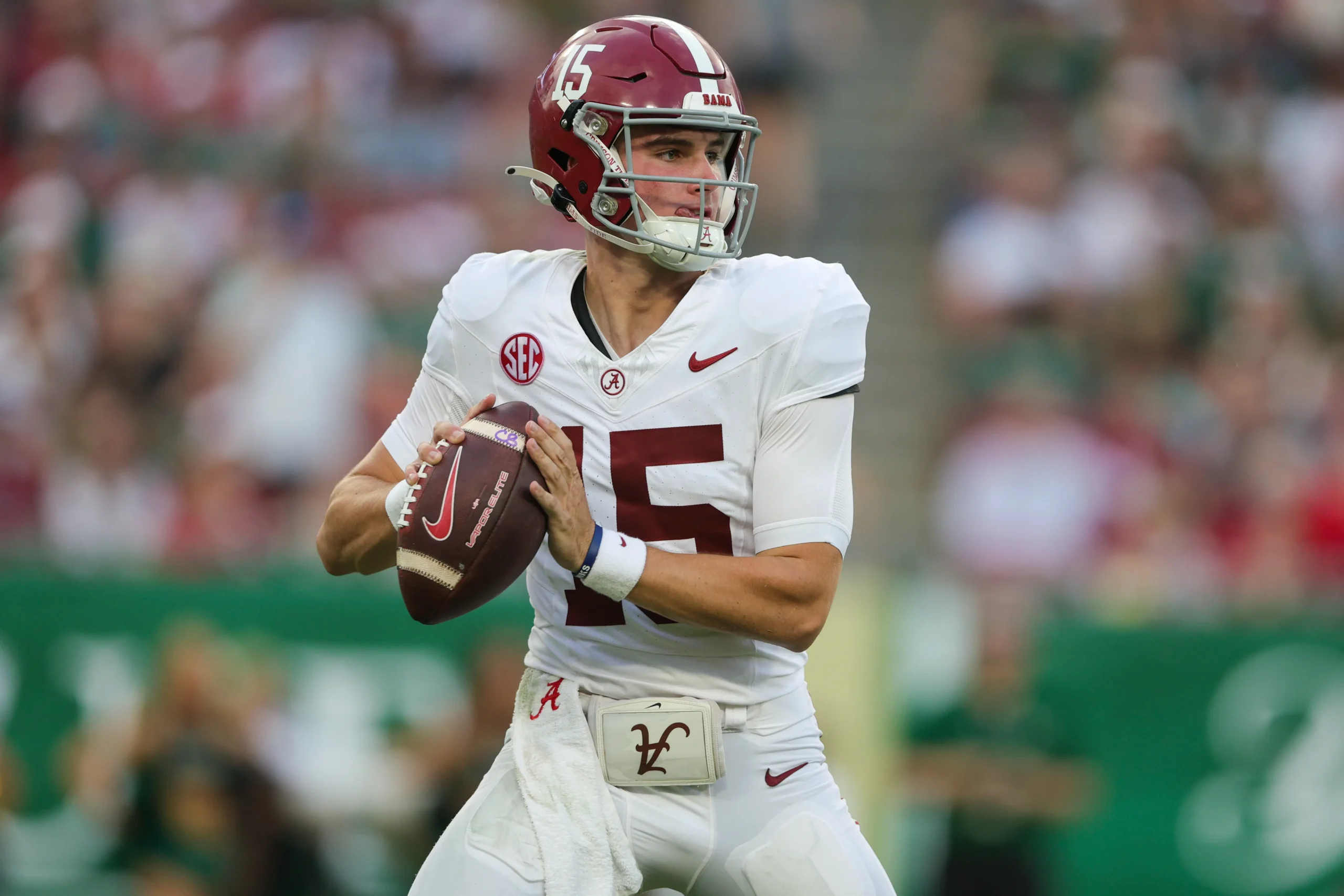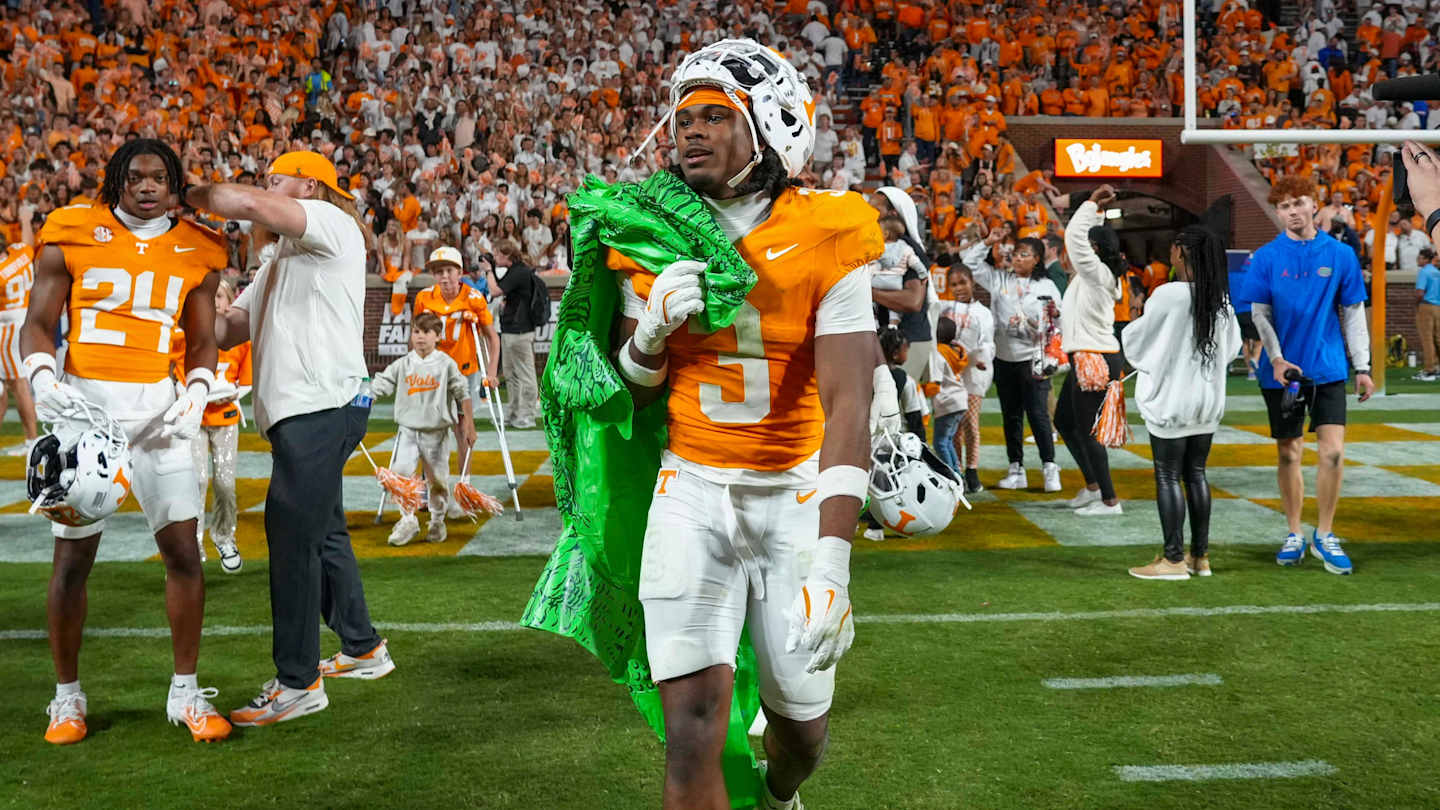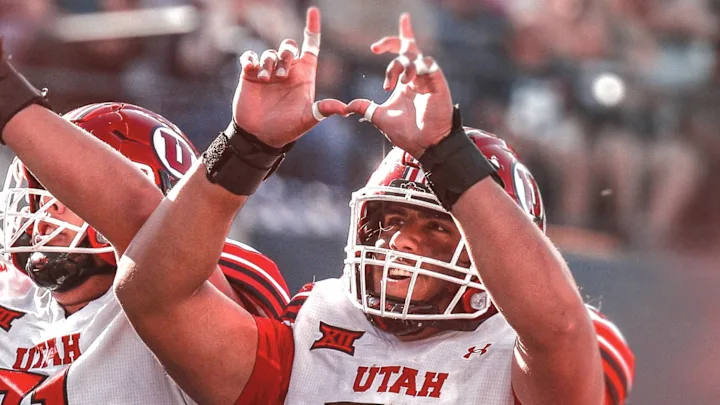By Charlie Campbell.
Send Charlie an e-mail here: [email protected]
Follow Charlie on Twitter @draftcampbell for updates.
This page was last updated March 24, 2016. Follow me @walterfootball for updates.
Position Review: Guards
Guard Class
Early-round talent: B
Mid-round: B-
Late-round: B
Overall grade: B
2016 prospects vs 2015
Brandon Scherff
Laken Tomlinson
Cody Whitehair
Vadal Alexander
Mitch Morse
Ali Marpet
Jeremiah Poutasi
Sebastian Tretola
A.J. Cann
Joshua Garnett
Tre Jackson
Joe Dahl
John Miller
Christian Westerman
Landon Turner
Denver Kirkland
Guard was a strong position in the 2015 NFL Draft and two players went in the first round with a rare top-five pick in Scherff. While the Lions took Tomlinson in the first round, the consensus around the league was that he was a second-day talent. This year’s draft class won’t have a first-round guard unless a player like Michigan State’s Jack Conklin is moved to guard, which would be similar to when the Cowboys took Zack Martin in the first round of the 2014 NFL Draft.
If you were to merge the two classes, Whitehair and Alexander would be on a par with the second-round guards of 2015. Tretola is very similar as a prospect to other recent third-round picks like the Raiders’ Gabe Jackson and the Lions’ Larry Warford. That trio was all powerful SEC road-graders entering the NFL. Josh Garnett and Joe Dahl are similar caliber prospects to Cann, Jackson and Miller. The other trio of 2016 prospects are on the bubble betweens Days 2 and 3, although some project Westerman to go in the second round.
Safest Pick: Sebastian Tretola, Arkansas

I don’t expect Tretola to become one of the elite guards in the NFL and a perennial Pro Bowler. However, I think he is a very safe pick to develop into a quality starting guard in the NFL. Tretola is very strong at the point of attack and can blast open running holes. From his first day in the NFL, he’ll be ready to contribute to ground game. Tretola will need some development as a pass protector with handling pro speed rushers, but he was reliable in college and I believe he has the potential to be well-rounded in the NFL. I think he’s going to pan out similar to Larry Warford or Gabe Jackson in recent draft classes.
2015 Pick: Brandon Scherff
2014 Pick: Xavier Su’a’Filo
2013 Pick: Chance Warmack
Biggest Bust Potential: Cody Whitehair, Kansas State

I went with Whitehair because he could go as high as the second round and be the first guard off the board, but I don’t feel that is appropriate. I know teams that have him late in the third round and some that graded him in the fourth round and well into Day 3. The reason I see Whitehair as a possible bust is a lack of power. He struggles against powerful pass-rushers and I don’t see him as a movement run blocker in the NFL. At 6-foot-3, 300 pounds, Whitehair is undersized for a NFL guard and I think he could get bullied around. He doesn’t make up for it by being overly fast or athletic. Thus, I see some bust potential with Whitehair.
2015 Pick: Jeremiah Poutasi
2015 Pick: Chris Watt
2015 Pick: Brian Winters
Guard Rankings by Attributes
Pass Protection:
NFL prototype: Kelechi Osemele, Raiders
- Cody Whitehair
- Joe Dahl
- Joshua Garnett
- Christian Westerman
- Landon Turner
- Sebastian Tretola
- Vadal Alexander
- Denver Kirkland
Recap: The NFL is a passing-driven league, so keeping a clean pocket as a pass blocker is the attribute that the majority of teams consider first. Coaches want the guards to keep defensive tackles from gaining penetration or causing disruption. If the guards are successful, quarterbacks can step up in the pocket to avoid edge rushers. This helps out the offensive tackles significantly. Plus, good guard play provides better throwing lanes for the quarterback.
Whitehair had a solid career starting at left tackle for Kansas State, and of this group, he is the most polished with his technique entering the NFL. He has enough speed and athleticism to handle the fast defensive tackles. Early on, he could use center double-team help with the powerful nose tackles and any Pro Bowl-caliber defensive tackle.
Dahl had some rough moments at the Senior Bowl, but generally was a good pass protector in college. Like Whitehair, Dahl has tackle experience.
In time, I think Garnett will overtake Dahl and Whitehair to be a better pass protector, but if they were to play a game tomorrow, the other two are more NFL-ready. Garnett has size to him go with some movement skills. He was solid for Stanford.
Westerman and Turner are generally strong in pass protection, but they are prone to some lapses. Both had some issues with speed rushers in college, but with some development, they should be balanced blockers as pros.
Tretola is not natural in space and has some problems with speed rushers. It was evident at times at the Senior Bowl. Tretola has the ability to be a good pass protector however; he just needs to improve his ability to handle speed.
Alexander and Kirkland both played tackle last year, but are too slow for that in the NFL. I think both could struggle in space with speed rushers in the NFL. Moving inside is mandatory for both Alexander and Kirkland.
Run Blocking:
NFL prototype: Mike Iupati, Cardinals
- Sebastian Tretola
- Vadal Alexander
- Denver Kirkland
- Christian Westerman
- Joshua Garnett
- Landon Turner
- Cody Whitehair
- Joe Dahl
Recap: Guards are the engine of a good running game. They are the most important blockers for opening holes up the middle in addition to pulling or moving on stretch runs. Dominant guards who can open up holes even when defenses know the run is coming provide a mental edge, especially late in games. This is a strong class of run blockers.
Tretola was a road-grader as a run blocker for Arkansas. He is extremely powerful at the point of attack with the ability to drive defenders out of their gap. His natural power is impressive.
Alexander and Kirkland are powerful maulers in the ground game. They both can push blockers out of their gap to open holes for their back. Leonard Fournette had a lot of success running behind Alexander at LSU, while Kirkland was a go to blocker for Razorbacks. Both should be assets in short-yardage situations in the NFL.
Westerman, Garnett and Turner are good run blockers. Westerman has natural strength to him with the athletic ability to fire to the second level. Garnett was a go-to blocker for the Cardinal and was superb at pulling. Turner was very good for the Tar Heels in the ground game last year.
Whitehair was a solid run blocker and has good technique; however, I think he’s going to struggle to get movement in the NFL because he lacks power. At 6-foot-3, his frame could be maxed out. Dahl is the same size, but he’s behind Whitehair because while his technique is decent, it is not as good as Whitehair’s.
Strength:
NFL prototype: Larry Warford, Lions
- Sebastian Tretola
- Vadal Alexander
- Christian Westerman
- Denver Kirkland
- Landon Turner
- Joshua Garnett
- Cody Whitehair
- Joe Dahl
Recap: There is no substitute for power at the point of attack. All of the top guards in the NFL have it. The strength to push linemen out of their gaps results in positive yards on the vast majority of plays.
For my money, Tretola is the most powerful guard in the draft class. He has natural strength to push defensive tackles out of their gaps. Tretola can put linemen on roller skates and toss them aside. He also displays a mean streak and blocks through the whistle. Over the course of games, Tretola wears down defenders and gives them long days of dealing with his power.
Alexander uses his strength to sustain his blocks as long as he deems acceptable when he gets a hold of a defender. Strength is an asset of his entering the NFL. Westerman also packs a punch and can move defenders at the point of attack. He displays stretches of being very powerful to push around defenders.
Kirkland, Turner and Garnett aren’t that far behind. All three of them can open holes with strength and push defenders around at the point of attack.
Whitehair and Dahl need to get stronger for the NFL. If possible, I think they both should move to center because the lack of power won’t be as big of a weakness in the middle as it will be at guard. Against a tough nose tackle, Whitehair and Dahl have to win with technique or beating the defender to a spot.
Zone Blocking:
NFL prototype: Josh Sitton, Packers
- Cody Whitehair
- Joe Dahl
- Christian Westerman
- Joshua Garnett
- Landon Turner
- Vadal Alexander
- Sebastian Tretola
- Denver Kirkland
Recap: The zone-blocking system is run by a number of NFL teams, and the success of the scheme has many power-man teams adding some zone plays into the playbook. The zone scheme calls for guards to have the ability to move well laterally and downfield to help set up moving wall with cut-back lanes. Guards need the athleticism and quickness in order to be effective.
The top two are clearly the best for a zone-blocking system. Whitehair would definitely fit best in a zone scheme. He has enough agility, athleticism and speed for the concept. Dahl is similar and a good fit in a zone-blocking scheme as well. He has the quickness and athleticism to be part of the moving well. Arizona State ran a lot of spread-option plays, and Westerman could fit that system as well.
Truner displayed some mobility in the way the Tar Heels ran the ball, but he lumbers at times. That will be more pronounced in the NFL. Alexander, Tretola and Kirkland are power-man blockers. They don’t look like they have the speed and athleticism to fit a zone scheme. Of those three, Alexander might be able to pull it off.
Power Man:
NFL prototype: Marshall Yanda, Ravens
- Sebastian Tretola
- Vadal Alexander
- Denver Kirkland
- Christian Westerman
- Landon Turner
- Joshua Garnett
- Cody Whitehair
- Joe Dahl
Recap: A lot of teams in the NFL run a power man-blocking scheme. Guards for this scheme need the ability to defeat their defender to blast open or seal a running lane. Guards need to have the power to move defenders and sustain blocks.
Tretola, Alexander, Kirkland, Westerman and Turner are all nice fits for power man. They all have the strength to move defensive linemen at the point of attack. All four have experience in that style of system and should be able to make the transition smoothly to the next level. Tretola is the best of the bunch because he did it so much at Arkansas. Alexander and Kirkland might need some time adjusting to guard after playing tackle last year. Garnett isn’t as strong as some of the other linemen, but he is a good technician in man blocking. He’s strong enough and also can get to spots and hit isolation blocks in space.
Whitehair and Dahl are not good fits for a power-man scheme. I think they’ll struggle to get movement at the point of attack.
Versatility:
NFL prototype: Kelechi Osemele, Raiders
- Cody Whitehair
- Joe Dahl
- Christian Westerman
- Vadal Alexander
- Denver Kirkland
- Joshua Garnett
- Landon Turner
- Sebastian Tretola
Recap: A lot of NFL offensive line coaches want to cross-train their interior linemen for another position, especially among the backup offensive linemen. It helps teams in making the decision on who to keep active on game days. Linemen who can play more than one position are highly valued. Coaches like guards who can play center or tackle if there is an injury in the middle of a game.
I think Whitehair and Dahl enter the NFL with impressive versatility. I think both of them could start out their careers as the sixth offensive lineman who backs up at perhaps three positions. I think Whitehair could end up being a backup at left tackle, guard and center. It wouldn’t be ideal to have Whitehair at left tackle, but in a emergency, he could play it to finish a game, and he has years of experience to help him. Dahl is similar, but I think Whitehair has better technique.
I believe Westerman could be cross-trained at guard and center. I think that Alexander and Kirkland are guards every day of the week in the NFL, but they do have tackle experience to potentially be a swing backup if necessary.
Garnett, Turner and Tretola all are guards for the NFL. They don’t look like options to play center or tackle.
Pulling:
NFL prototype: Zack Martin, Cowboys
- Joshua Garnett
- Christian Westerman
- Cody Whitehair
- Joe Dahl
- Landon Turner
- Vadal Alexander
- Sebastian Tretola
- Denver Kirkland
Recap: Pulling is absolutely necessary for a man-blocking system to work. Zone teams are becoming more diverse and are mixing in more power-man plays that have guards pulling. The quick and athletic guards of zone schemes do better pulling than isolating and charging straight ahead. Thus, a zone team will like to see a prospect’s ability to pull as well.
Garnett was a superb pulling guard for Stanford. He is so agile, quick and balanced in his approach. Some times, Garnett dishes out devastating blocks pulling around to blast open holes. This is perhaps his biggest strength entering the NFL.
There were games where Westerman was very impressive at pulling. He flashes quickness to bend around the line and blast a hole open. There were other contests where it wasn’t as effective, but still he is very adept at pulling and that should be a quick asset of his game in the NFL.
Whitehair pulled well for Kansas State the past few seasons and should continue to be effective in the NFL. Dahl was similar for the Cougars.
The bottom four will need some work at pulling in the NFL, but I don’t think they’re incapable of executing as pulling guards in their pro careers.
NFL Picks - Dec. 21
NFL Power Rankings - Dec. 17
2026 NFL Mock Draft - Dec. 17
Fantasy Football Rankings - Sept. 1




